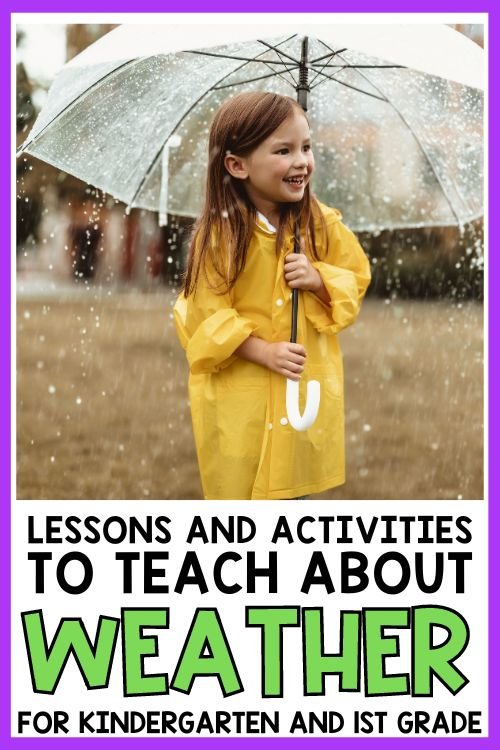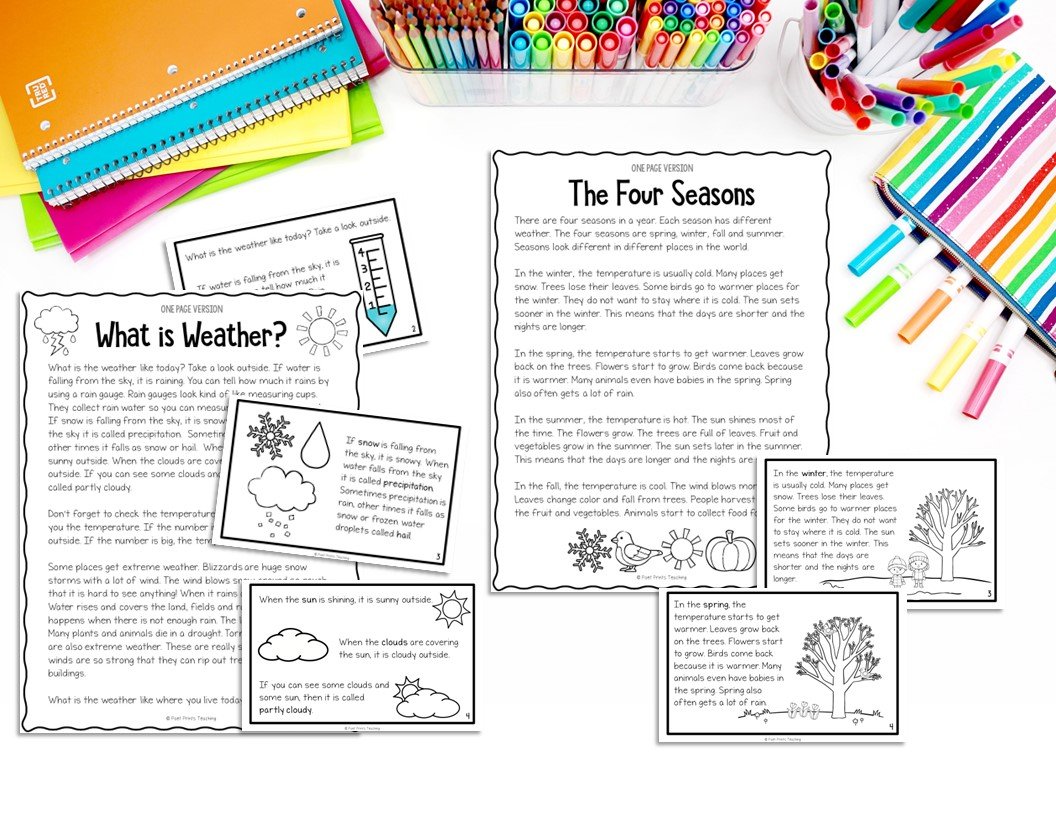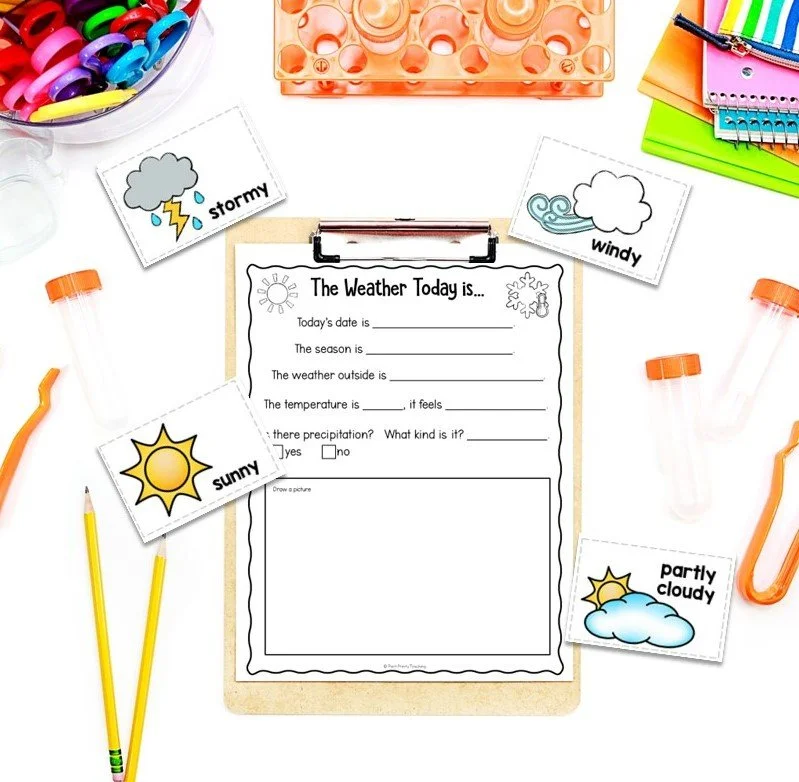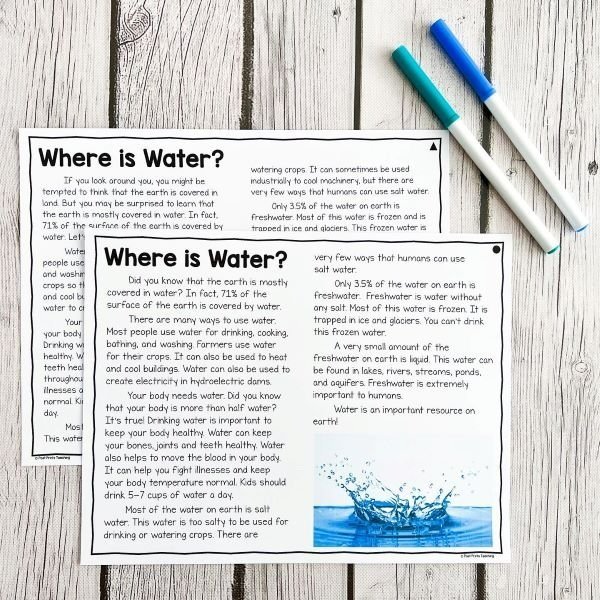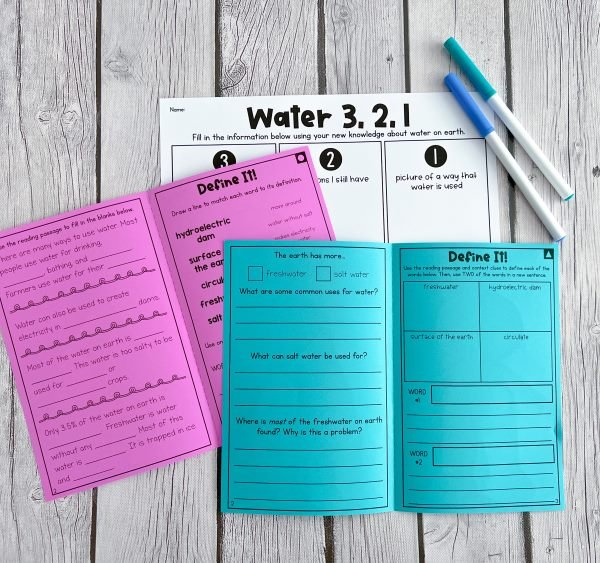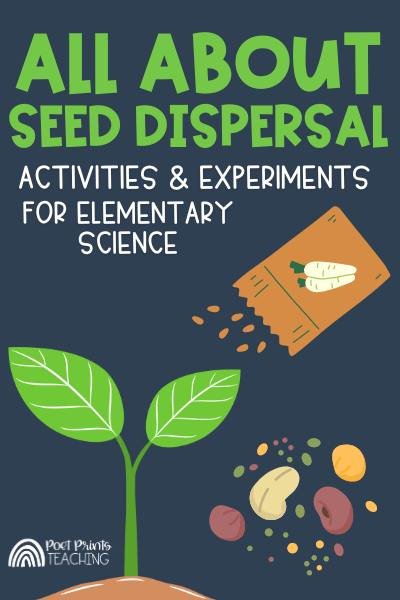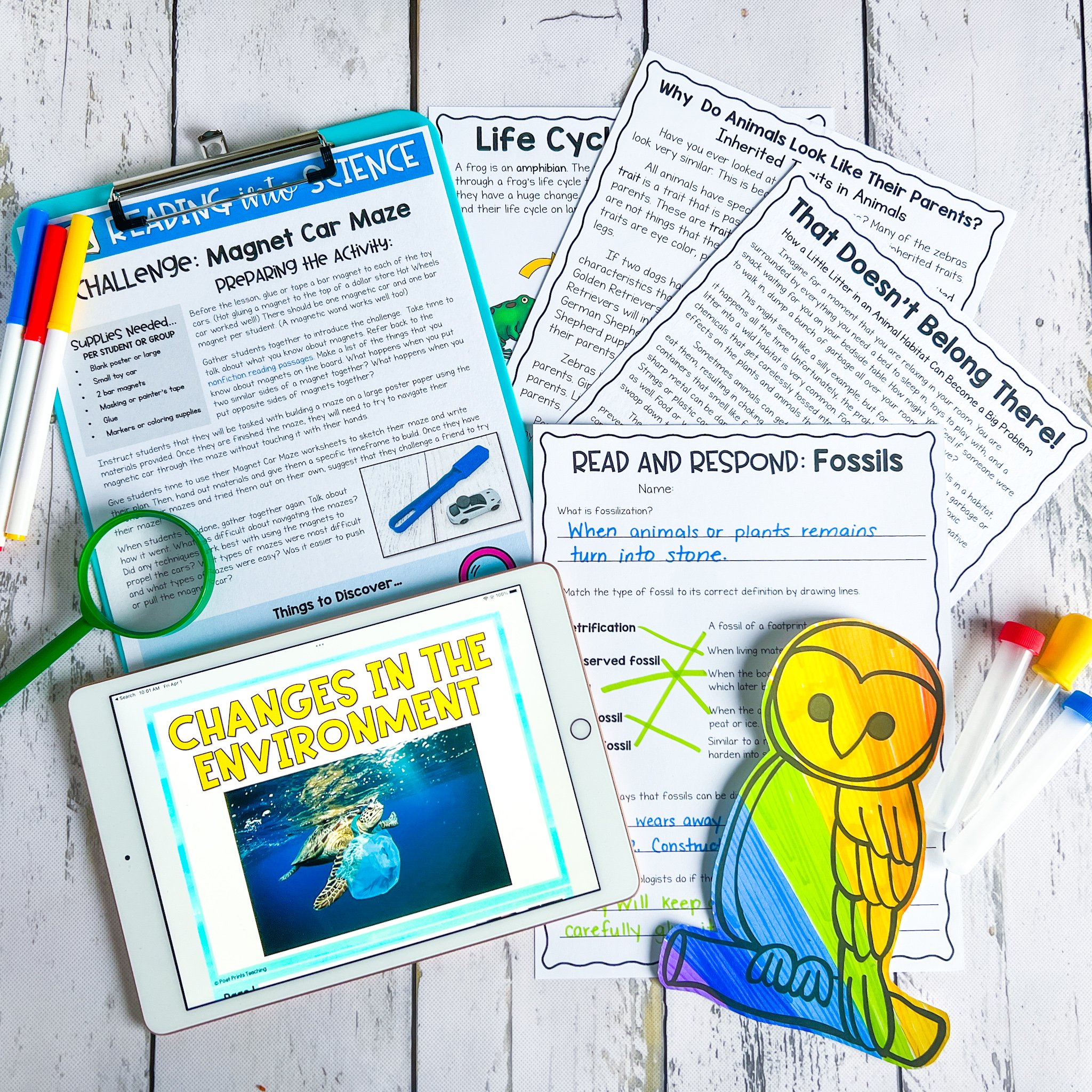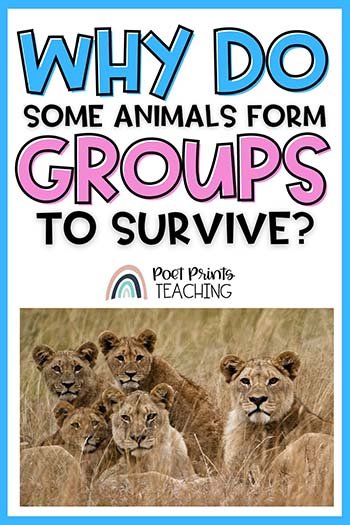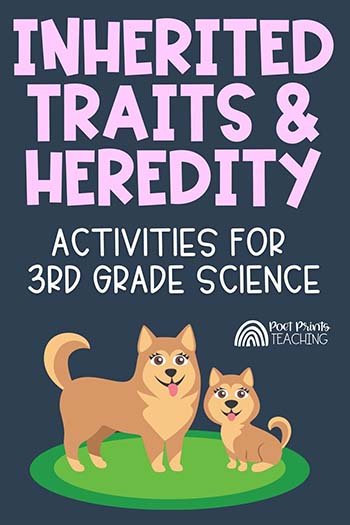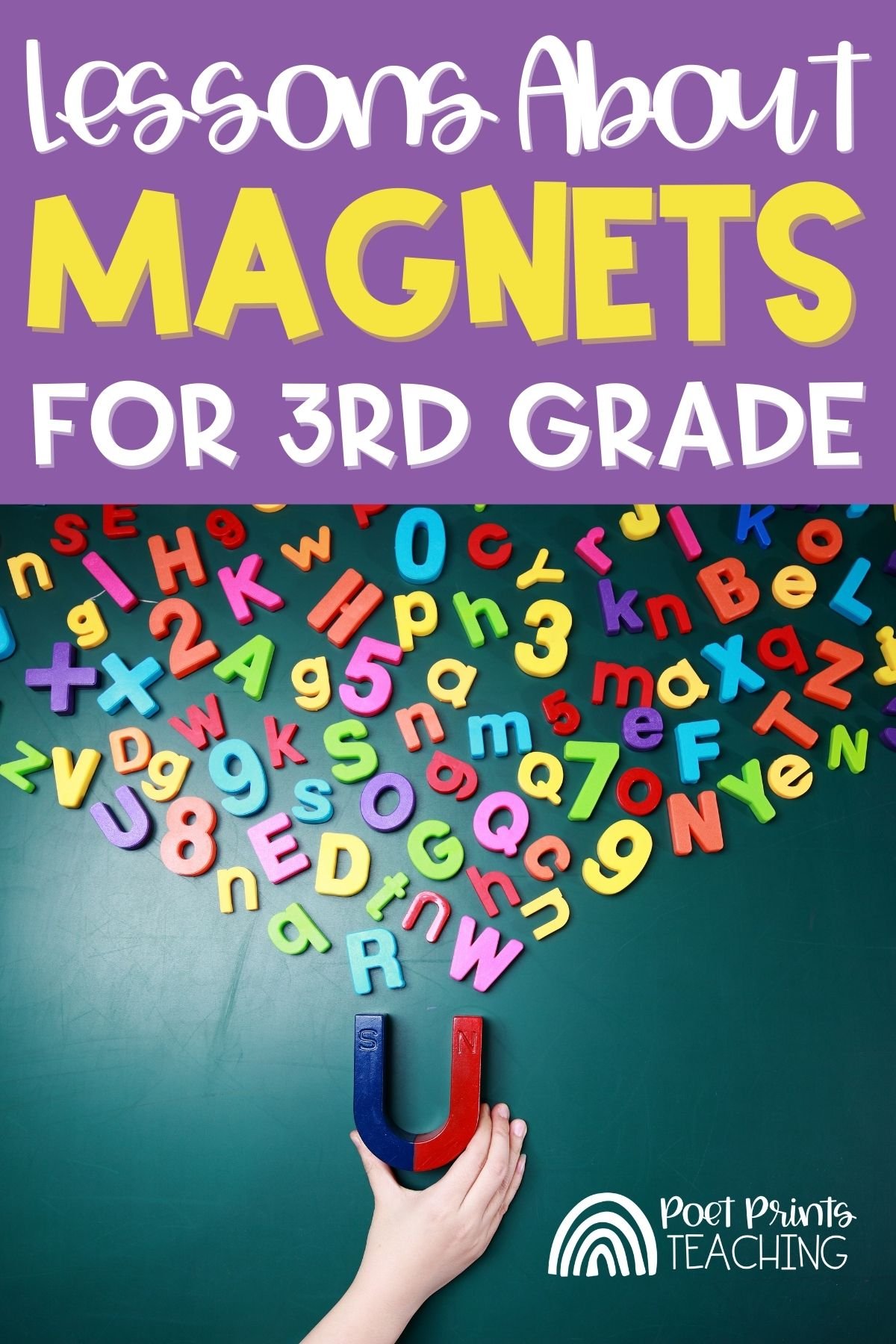Mr. Sun, Sun, Mr. Golden Sun, please shine down on me. Rain, rain go away come again another day. It’s raining, it’s pouring, the Old Man is snoring….there are several nursery rhymes and jingles about the weather. Weather is a conversation point in most grocery store line-ups. And the weather is just interesting to talk about. So learning about the weather in Kindergarten and first grade can be really fascinating for little learners. There are some awesome weather science experiments and weather activities for kindergarten.
What is the weather?
As the Oxford Dictionary defines, ‘weather’ is “the state of the atmosphere at a place and time as regards heat, dryness, sunshine, wind, rain, etc.” But in more kid-friendly terms, ‘weather’ is how the air is feeling right now! Is it raining? Cloudy? Snowy? Sunny? Weather also includes temperature. Is it hot? Cold?
The Easy Way to Teach Weather & Seasons
Looking for an all-in-one unit to teach weather and seasons to little learners? In just a few clicks you can grab all the pieces you need: lesson plans, vocabulary cards, hands-on activities, printable worksheets, and more!
Weather Videos for Kids
If you’re a fan of Blippi, here’s a video where Blippi explores the topic of Weather.
This is a simple video to help teach weather vocabulary.
This video is a compilation of some Weather Songs that your little learners might love.
Reading About the Weather
Reading about the weather is a great place to start. For little learners, these reading passages are best used as a teacher-led activity. There are two options for reading: a simple page version or a student mini-book, depending on your preference of format.
I suggest creating a word wall before reading the passage. Use the Word Wall Cards to help students learn the weather vocabulary. You can then use the cards as a hands-on vocabulary puzzle of center activity where students match the word and picture together. If your students can’t read yet, they can just use the pictures and verbally explain what the picture represents.
Chart the weather
Charting the weather can be a great whole-group weather activity for Kindergarten. Gather students together on the carpet and make observations about the weather outside. Then complete the pocket chart weather information (include a picture of the pocket chart from the unit here?). Where possible, try to use precise scientific vocabulary like Celsius and precipitation. Not only will this help students in their learning, but it helps them feel empowered because they learned the meanings of tricky words. If you’re not quite sure what this lesson might look like, check out this unit for a sample lesson and a detailed lesson plan.
Once you’ve completed the group charting, have students move to their independent weather journals.
Keep a Weather Journal
This weather journal is available as a part of the Weather and Seasons Unit for Little Learners.
A Weather Journal is a great way of keeping track of weather and weather patterns. Plus, Weather Journals are a great way to combine science and writing skills. This Weather Journal (link to it) allows students to copy and fill in information from the group charting.
SciShow Kids is a personal favorite of mine. This video talks about keeping a weather journal and might be a perfect way to introduce how to write a weather journal!
Explore the Weather Far Away
Use a computer to research what the weather is like in another area of the world. Maybe one of your students has family members living on the other side of the world. How fun would it be for your students to learn about the weather in that country? Talk about how it might differ from where you are.
Shaving Cream Clouds
When learning about clouds and rain, this activity is a perfect weather experiment for little learners. Shaving cream rain clouds will be a highlight activity for your students. One Little Project has a great description (and video!) of how to complete this activity!
Homemade Rain Guage
Weather involved tools for collecting data and predicting patterns. Check out this simple rain guage activity you can do with your students.
There are plenty of weather experiments and weather activities out there. Do you have any favorites? Feel free to comment about your ideas below!



